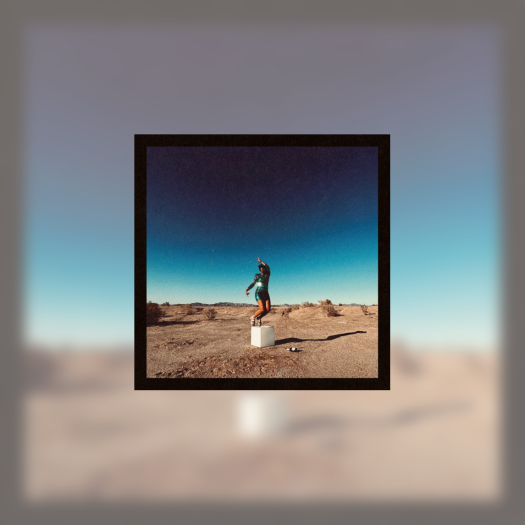Impulse purchases were all the rage in 2020. Some people got dogs, others bought cottages. Metric bought a church in small-town Ontario and converted it into a recording studio.
"I got a dog too, though," clarifies the band's guitarist, James Shaw, speaking with Exclaim! over Zoom alongside singer Emily Haines while a handful of pups roam around in the background.
That age of uncertainty also left the veteran synth rockers' rhythm section unable to enter the country; bass player Joshua Winstead and drummer Joules Scott-Key both live in the United States, and it was unclear when they would be able to rejoin their bandmates. So, when Shaw and Haines, who were staying a few minutes drive from one another, were finally able to mingle outside of their households again, they set up a makeshift studio in Haines's rural Ontario home, joined by a frequent collaborator, former Stills keyboardist Liam O'Neil.
"We were recording lots of music; we were writing lots of songs; we had what felt like endless amounts of time," recalls Shaw. "But you didn't really understand if what you were doing was permanent, or unbelievably temporary."
Still, Metric jumped at the chance to buy the building that now houses their Main Street Studios when it became available. "It felt like totally the right thing to do and just kind of move forward," says Shaw. The resulting sessions produced not one but two records' worth of material: last year's Formentera and its companion record, Formentera II, out October 13.
While both records were written and recorded in the same period, they are designed to stand alone, each album sequenced with its own "internal logic," says Haines. But she sees threads of connections between individual songs: "Just the Once" from Formentera II and the title track of the first album, for example, form what Haines describes as a "regret disco arc," while "Descendants" and "Doomscroller" are linked by their "ravey distress" vibe — which Haines calls "our signature genre."
Shaw already owned Giant Studio in downtown Toronto, a space that Metric has used extensively going back to 2009's Fantasies. "I've had that place for 15 years, but it felt like it was like running its course," he says.
"I don't find the studio the most creative place for me," says Haines. As amazing as Giant is, with a central location in Canada's biggest city, it was still just a garage full of gear. "There's just so much downtime and file rendering and whatever else. If you're sitting on a couch, you just sort of die inside."
In a twist of fate, Shaw sold Giant to producer Gus Van Go, known for his work with both Metric and O'Neil's old band, the Stills, among many other artists. Van Go, who co-produced both Formentera albums with Shaw and O'Neil, has since turned the space into an artists' hub, working with bands like the Beaches and Sam Roberts. "Giant was supposed to be this hub and it wasn't," says Haines. "It's having a renaissance and next chapter in his care."
It took Shaw and O'Neil three days to tear down what they'd built over 15 years. And while it would be six months before setup at Main Street was complete, they were functional within a few days, as the band continued to work.
Main Street is a sprawling complex compared to the 1,000-square-foot rectangle-shaped room that was Giant. As Shaw and Haines speak over Zoom, the studio is full of activity behind them. Metric are in the midst of production rehearsals for their upcoming tour. "We could never have done that at Giant," says Shaw. Pieces of gear, like production monitors, are tucked into every nook and cranny.
The studio can house about a half-dozen people between the apartment on top of the backyard garage and the spacious modern bedrooms in the basement. The main studio floor is located in the nave, where parishioners once sat, while the drums sit in the apse, where the preacher once stood. The two areas are separated by a large, galley-style kitchen.
"It's kind of a vibe, because people can hang out, cook dinner and still be part of what's happening," says Shaw. The loft looking over the main room is used mostly for storing some of the band's many analogue and digital synths; Shaw says he has no idea how many the band owns, but there was regularly at least one in sight throughout the virtual tour he gave of the studio.
In the past, Metric have put limitations on themselves, but the Formentera albums were made without restraints. "Sometimes we're not going to use half the gear," he says. "The mantra was: go do everything that your brain can possibly imagine. It was kind of our only freedom."
For the past 20 months, Main Street has been exclusive to Metric; most of Formentera II was made there, with finishing touches made at famed dance hub Motorbass Studios in Paris. Shaw hopes to see it used by their friends and peers if they can find the right person to run it when they're away: "I think more records than what we can make should be made in this place."
Remarkably for a band who've been together for more than two decades — this year marks the 20th anniversary of their debut album Old World Underground, Where Are You Now? — the isolation that comes with living and working at in a rural studio during a pandemic wasn't a problem. Says Haines, "We were just trying to help each other out."
"I got a dog too, though," clarifies the band's guitarist, James Shaw, speaking with Exclaim! over Zoom alongside singer Emily Haines while a handful of pups roam around in the background.
That age of uncertainty also left the veteran synth rockers' rhythm section unable to enter the country; bass player Joshua Winstead and drummer Joules Scott-Key both live in the United States, and it was unclear when they would be able to rejoin their bandmates. So, when Shaw and Haines, who were staying a few minutes drive from one another, were finally able to mingle outside of their households again, they set up a makeshift studio in Haines's rural Ontario home, joined by a frequent collaborator, former Stills keyboardist Liam O'Neil.
"We were recording lots of music; we were writing lots of songs; we had what felt like endless amounts of time," recalls Shaw. "But you didn't really understand if what you were doing was permanent, or unbelievably temporary."
Still, Metric jumped at the chance to buy the building that now houses their Main Street Studios when it became available. "It felt like totally the right thing to do and just kind of move forward," says Shaw. The resulting sessions produced not one but two records' worth of material: last year's Formentera and its companion record, Formentera II, out October 13.
While both records were written and recorded in the same period, they are designed to stand alone, each album sequenced with its own "internal logic," says Haines. But she sees threads of connections between individual songs: "Just the Once" from Formentera II and the title track of the first album, for example, form what Haines describes as a "regret disco arc," while "Descendants" and "Doomscroller" are linked by their "ravey distress" vibe — which Haines calls "our signature genre."
Shaw already owned Giant Studio in downtown Toronto, a space that Metric has used extensively going back to 2009's Fantasies. "I've had that place for 15 years, but it felt like it was like running its course," he says.
"I don't find the studio the most creative place for me," says Haines. As amazing as Giant is, with a central location in Canada's biggest city, it was still just a garage full of gear. "There's just so much downtime and file rendering and whatever else. If you're sitting on a couch, you just sort of die inside."
In a twist of fate, Shaw sold Giant to producer Gus Van Go, known for his work with both Metric and O'Neil's old band, the Stills, among many other artists. Van Go, who co-produced both Formentera albums with Shaw and O'Neil, has since turned the space into an artists' hub, working with bands like the Beaches and Sam Roberts. "Giant was supposed to be this hub and it wasn't," says Haines. "It's having a renaissance and next chapter in his care."
It took Shaw and O'Neil three days to tear down what they'd built over 15 years. And while it would be six months before setup at Main Street was complete, they were functional within a few days, as the band continued to work.
Main Street is a sprawling complex compared to the 1,000-square-foot rectangle-shaped room that was Giant. As Shaw and Haines speak over Zoom, the studio is full of activity behind them. Metric are in the midst of production rehearsals for their upcoming tour. "We could never have done that at Giant," says Shaw. Pieces of gear, like production monitors, are tucked into every nook and cranny.
The studio can house about a half-dozen people between the apartment on top of the backyard garage and the spacious modern bedrooms in the basement. The main studio floor is located in the nave, where parishioners once sat, while the drums sit in the apse, where the preacher once stood. The two areas are separated by a large, galley-style kitchen.
"It's kind of a vibe, because people can hang out, cook dinner and still be part of what's happening," says Shaw. The loft looking over the main room is used mostly for storing some of the band's many analogue and digital synths; Shaw says he has no idea how many the band owns, but there was regularly at least one in sight throughout the virtual tour he gave of the studio.
In the past, Metric have put limitations on themselves, but the Formentera albums were made without restraints. "Sometimes we're not going to use half the gear," he says. "The mantra was: go do everything that your brain can possibly imagine. It was kind of our only freedom."
For the past 20 months, Main Street has been exclusive to Metric; most of Formentera II was made there, with finishing touches made at famed dance hub Motorbass Studios in Paris. Shaw hopes to see it used by their friends and peers if they can find the right person to run it when they're away: "I think more records than what we can make should be made in this place."
Remarkably for a band who've been together for more than two decades — this year marks the 20th anniversary of their debut album Old World Underground, Where Are You Now? — the isolation that comes with living and working at in a rural studio during a pandemic wasn't a problem. Says Haines, "We were just trying to help each other out."




